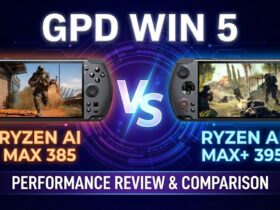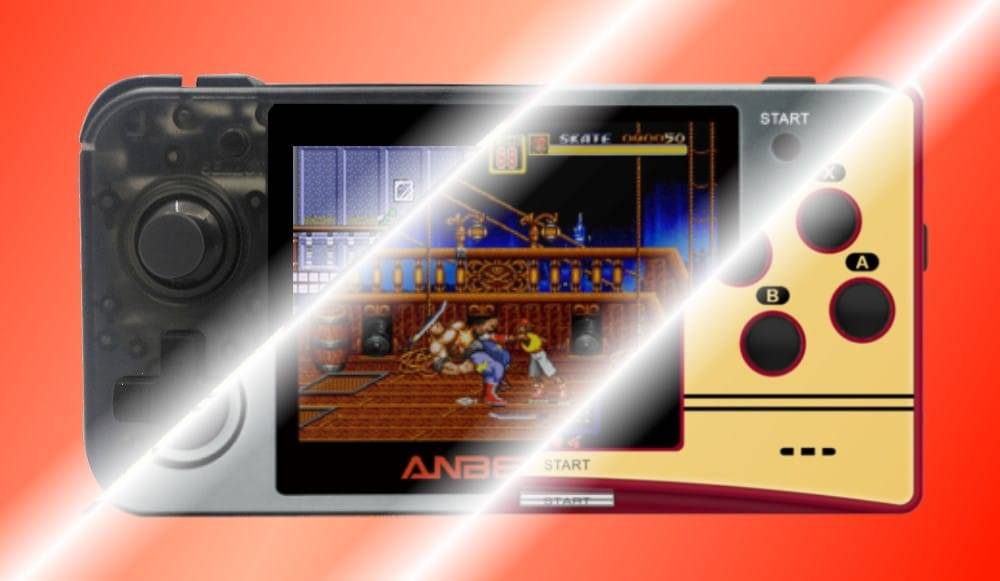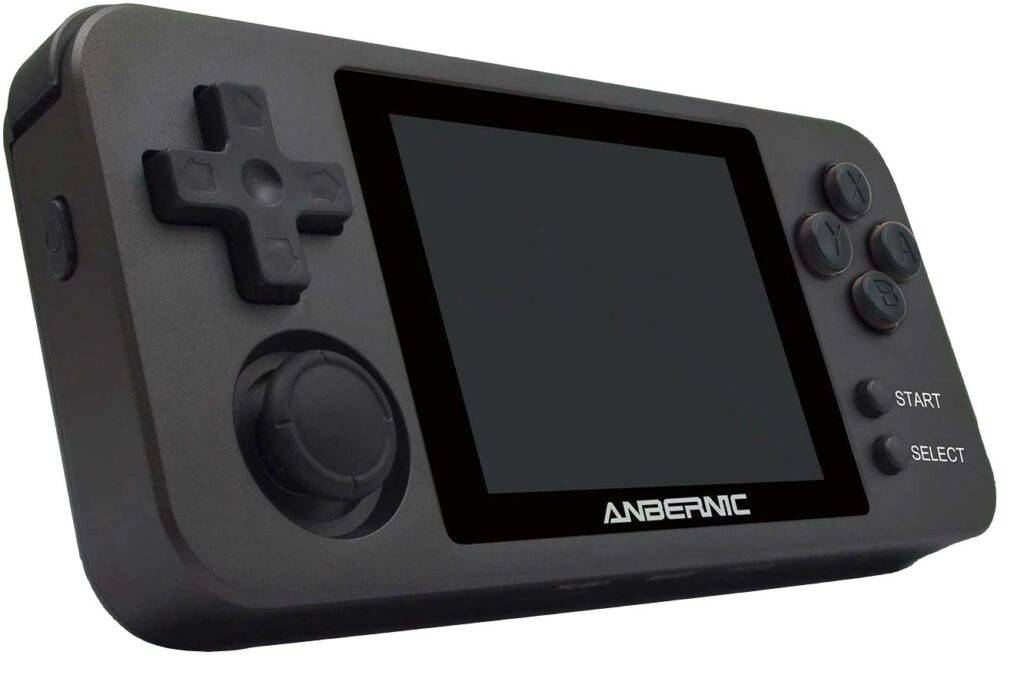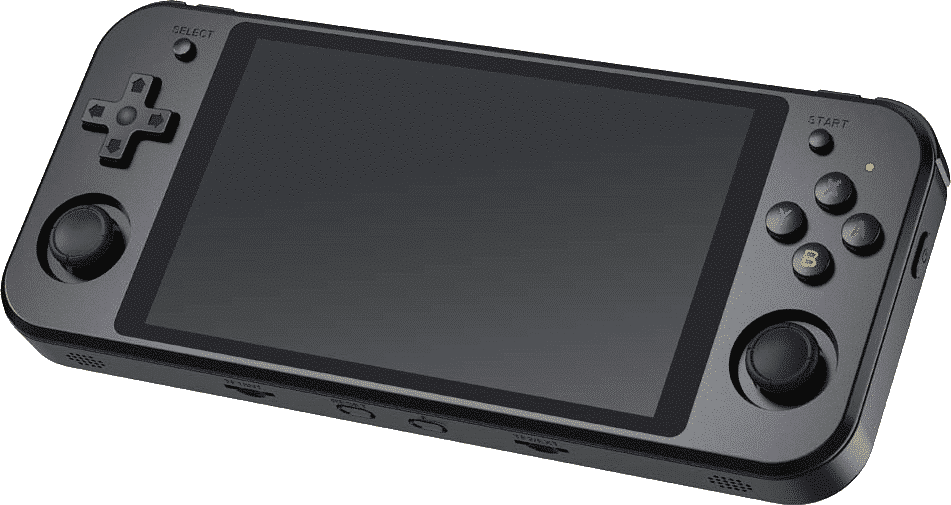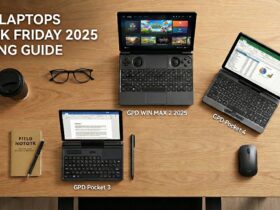The RG350 is a popular retro gaming handheld that spurred a number of successors throughout it's lifespan and can be considered to be the first Retro Gaming Handheld that saw (relative) mainstream adoption.
In this article, we're going to go over the RG350 and it's various relatives to give you a better idea of what you're getting into with your next handheld retro console purchase.
For ease of understanding, we have categorized the handhelds into generations based on their processor. All handhelds in a generation will expect similar performance within games.
First-Generation ANBERNIC RetroGame Handhelds
The first generation of ANBERNIC RetroGame handhelds contains only one member, and was relatively short-lived compared to other generations.
What is the RG300?
The RG300 is the immediate predecessor to the RG350, coming out only a new months before it.
While it uses a weaker CPU than the RG350, it is still capable of emulating a wide range of retro handheld, 8-bit and 16 -bit consoles. It cannot really handle 32-bit platforms and beyond however (PS1, etc.)
Unlike its successors, the RG300 is the only model to feature a user-swappable battery.
Also unlike later models, the RG300 is the only one to not feature L2/R2 shoulder buttons.
Second-Generation ANBERNIC RetroGame Handhelds
The second generation of ANBERNIC RetroGame is, to date, the most popular generation, featuring numerous iterations. All second-generation RG handhelds are powered by an Ingenic JZ4770 CPU, and feature 512MB of RAM.
Second-generation ANBERNIC handhelds can emulate most platforms up to PS1 without many, if any issues.
What is the RG350?
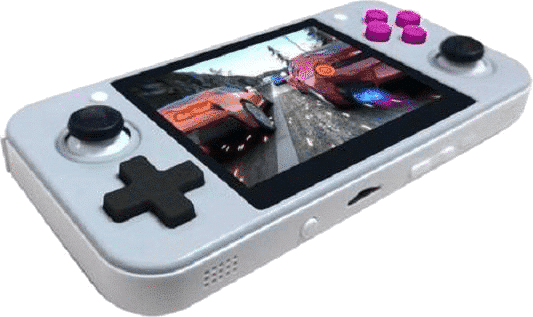
Where it all started. The ANBERNIC RG350 is a retro gaming handheld powered by the JZ4770 CPU that runs (stock) using a fork of OpenDingux.
Its claim to fame is being able to comfortably handle PS1 emulation (as well as numerous other retro platforms) at an economical price point and solid build quality.
It features a standard, yet comprehensive set of controls (triggers and bumpers, clickable dual-analog sticks, etc.), and also features the ability to output via HDMI, however this functionality is fairly flaky and may not play nice with all TV's/monitors.
It can be considered a major turning point in the retro gaming handheld scene, with an affordable price, flexibility, and high build quality. A paradigm shift away from the „500-in-1″ standards that had been common prior.
Nowadays this model is pretty much obsolete. If you don't like some of the changes in later models however, or are looking for the cheapest entry point, it could still be a good pick for you.
What is the RG350M?
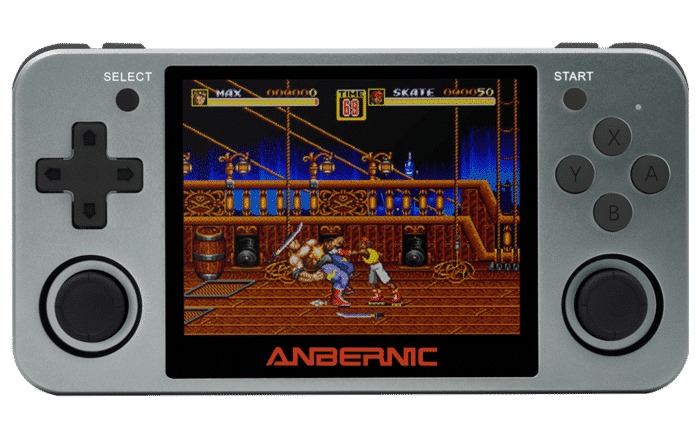
The ANBERNIC RG350M was the successor to the RG350. It features a number of changes over the original RG350:
- The shell is made of aluminium instead of plastic. Making it slightly heavier, and giving it a sturdier feel.
- The general layout of the device has been revamped
- The analogue sticks are now low-profile, and are symmetrical in placement on the bottom half of the device.
- The volume and power buttons have been moved to the sides of the unit
- The „internal" SD card can now be accessed via an external slot, eliminating the need to open the unit or SSH into the system to modify its contents.
- The screen is a higher resolution, at 640 x 480 (previously 350 x 240)
- There are rubber grips on the rear of the device to make it easier to hold.
In essence, it is a premium version of the RG350.
What is the RG350P?
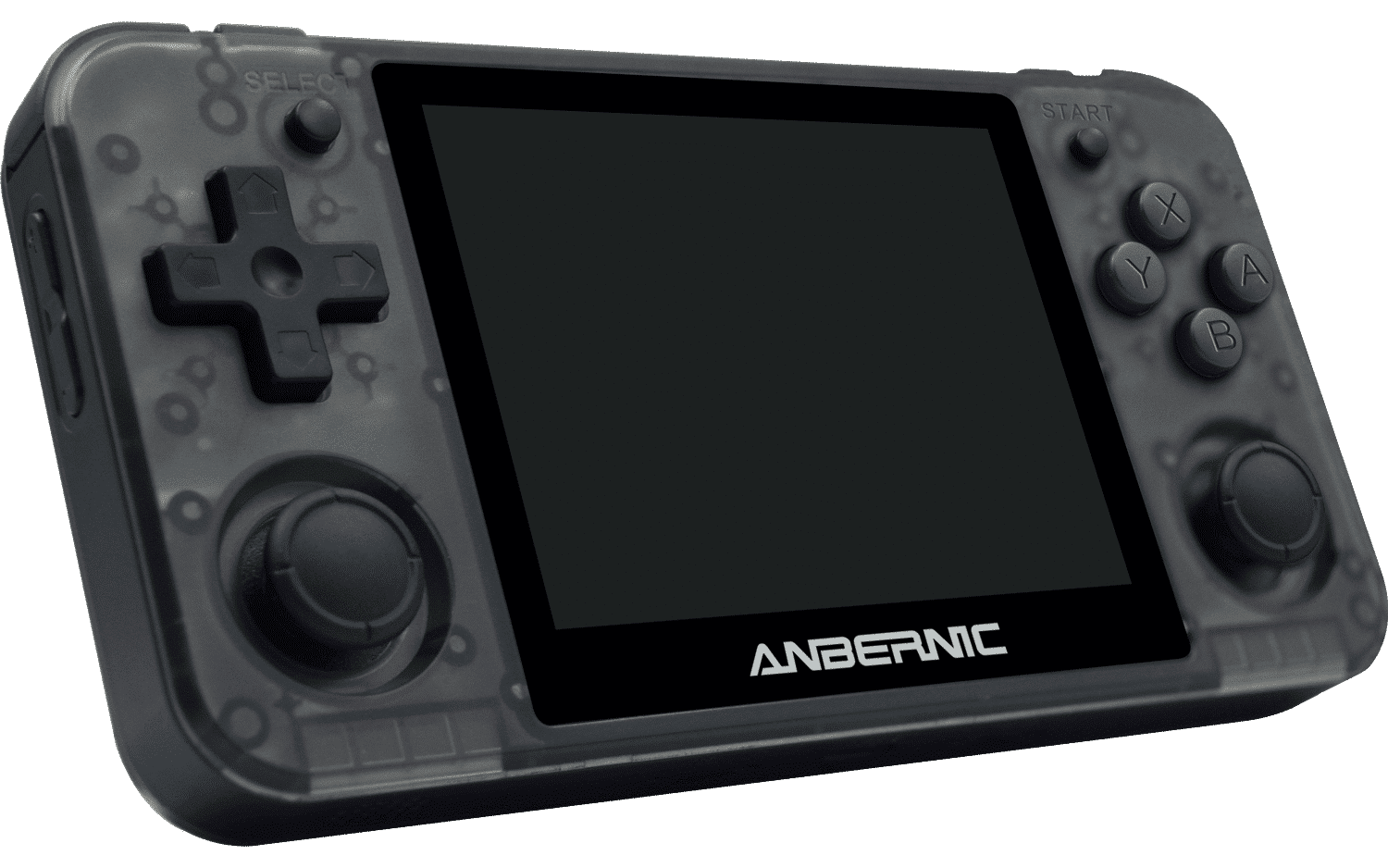
The RG350P was a more price-conscious alternative to the RG350M, featuring most of the improvements it brought to the table.
The main differences between the ANBERNIC RG350P and the RG350M, is that the RG350P does not have a metal shell, and that the screen is the same resolution as the RG350 (240p).
With this in mind, the RG350P is a valid alternative for those who would like an updated model, but do not care for the metal shell or higher-resolution screen.
What is the RG280M?
The RG280M is a „minimized" version of the RG350M.
It features the same fundamental upgrades, including a higher-resolution 480P screen and a metal shell, but in a much smaller size.
Because of the smaller size, it lacks the HDMI output of its larger relatives. It also only features one analogue stick, as well as a smaller screen overall (2.8 inches instead of the regular 3.5 inches).
The RG280M is also the only ANBERNIC device to date that broke away from standard Grey/Black colouration for metal devices. Featuring a rather funky „gradient" colour.
What is the RG280V?
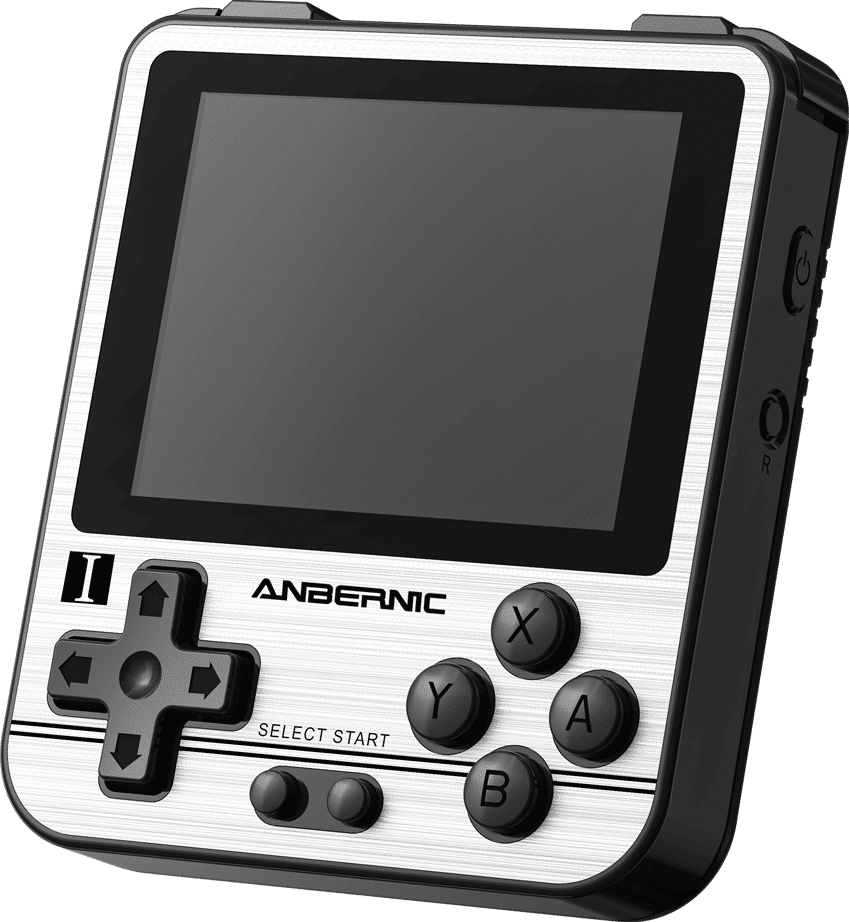
The ANBERNIC RG280V is a variant of the RG350 that features an entirely different layout, being horizontal and more comparable to handhelds like the original Bittboy models, or the LDK handhelds.
It features the same screen as the RG280M (2.8 inch, 480p) and most of the buttons. However, it does not feature any analogue sticks whatsoever.
The build of the unit itself is plastic, but it does feature a metal faceplate. Being the first RG handheld to incorporate a mixture of the two materials in the design.
It is considerably more portable than its predecessors, being only about half the length and noticeably lighter.
What is the RG300X?
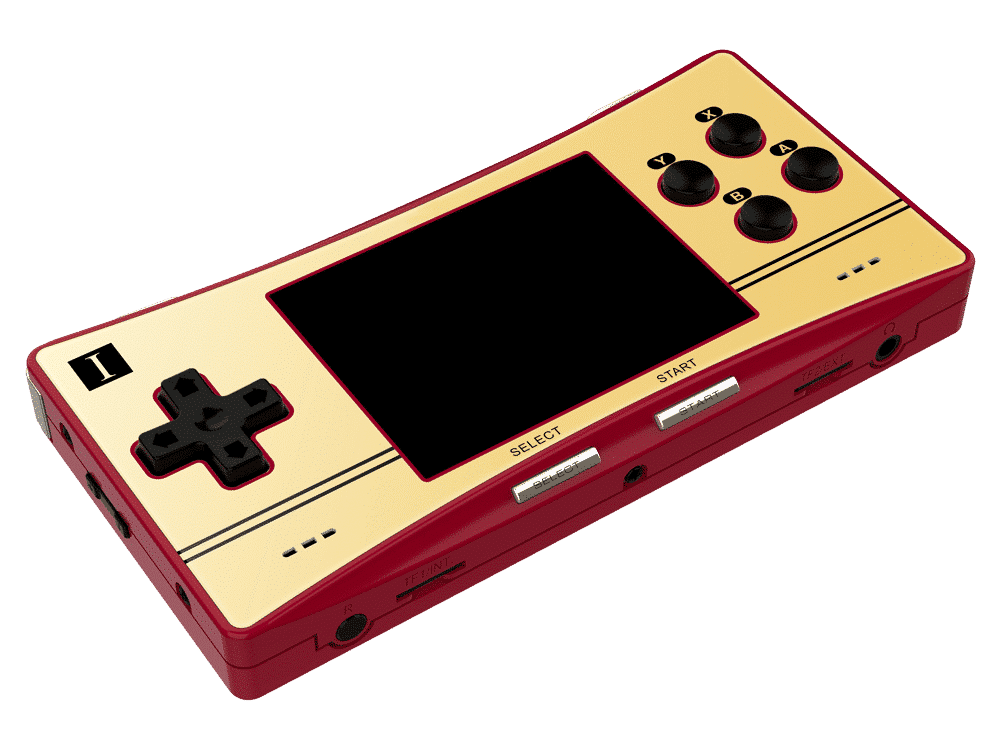
The RG300X is perhaps ANBERNIC's strangest handheld yet.
The design of the ANBERNIC RG300X is very clearly reminiscent of the GameBoy Micro. With colour options identical to that of the RG280V (a red & gold famicom-inspired motif, and a more subdued black & silver motif).
Aside from the form factor/aesthetics, it is very similar to the RG280V. With the main difference being that the screen is higher resolution (640x480p), and is 3 inches in diameter.
Rather than a straight upgrade, the RG300X can be considered a niche side-grade to the RG350 family, like the RG280V.
You can check out our RG300X review for a closer look at this retro gaming handheld.
Third-Generation ANBERNIC RetroGame Handhelds
The third generation of handhelds is when ANBERNIC really started to enter the public eye. With the more powerful processor, emulation performance was improved across the board and previously unplayable consoles were now available. Including PSP, Sega Dreamcast, and more.
This generation also marked a shift away from OpenDingux, and instead made use of the more user-friendly EmuELEC as its operating system.
What is the RG351P?

The RG351P is a true successor to the RG350. It features a number of changes on both a hardware and software level.
Powered by the Rockchip RK3326 and having 1GB of RAM, it handles pretty much everything the RG350 did flawlessly, while also being able to handle more platforms such as the N64, Dreamcast, and even PSP/DS. For anything newer than the PS1 (as well as contemporary devices like the Sega Saturn), performance does vary wildly from game to game.
It runs EmuELEC by default, which is an operating system that uses EmulationStation as a front-end (for organization), and RetroArch as a back-end (for managing/configuring emulators).
The performance on the stock firmware is not the greatest in anything beyond the PS1, so we'd highly recommend looking into custom firmware.
Other noticable changes in the ANBERNIC RG351P include a lack of HDMI output and a single-SD-card design for handling both the OS and games/emulators.
Does the RG351P support Wi-Fi?
The RG351P is also capable of interacting over the internet. You can natively scrape databases for metadata for your collection, download new themes for EmulationStation, and even play online via RetroArch's netplay feature.
The very first run of RG351P's featured a built-in Wi-Fi chip, however, this was removed in subsequent batches due to a flaw in the design resulting in the speakers emitting a loud crackle whenever there was network activity. Nowadays, you'll need to use a USB wi-fi dongle (+ an OTG adapter, as there are not really any USB-C Wi-Fi dongles out there currently) in order to access the online functions.
We at DroiX sell a handy bundle containing a Wi-Fi USB Dongle, OTG adapter and an RG351P screen protector too, if you're on the hunt for them in particular.
What is the RG351M

The RG351M is less of an upgrade to the RG351P than the RG350M was to the RG350 (stay with us now!).
It features an aluminium metal shell, and a functional, non-flawed built-in Wi-Fi chip (2.4GHz only). Outside of that, there is nothing else of note about the unit; it is otherwise identical to the RG351P.
For more information on the RG351M, please feel free to check our our ANBERNIC RG351M Review!
What is the RG351V?
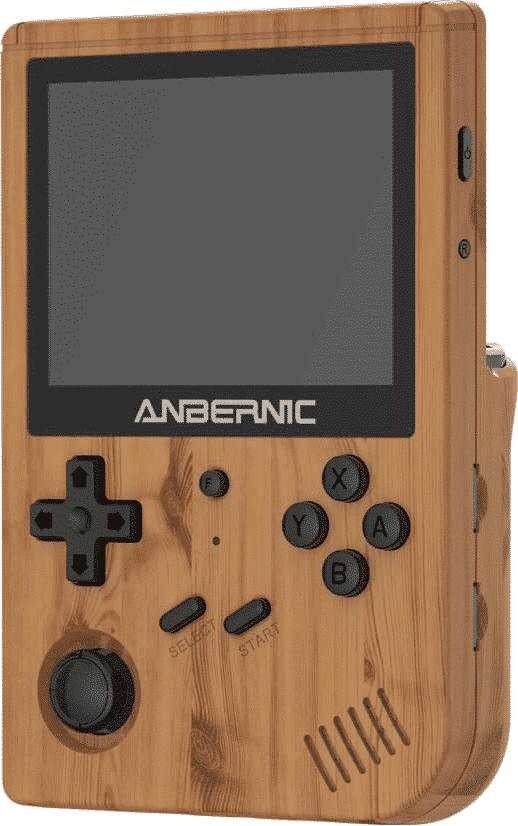
The RG351V is the third entry in ANBERNIC's RG351 family.
The RG351V features a substantial number of changes over the RG351M, such as:
- The design has changed entirely, and is now vertically oriented. This means that the controls are situated below the screen, rather than on the sides.
- The RG351V's screen is 640x480p and has a 4:3 aspect ratio. This allows it to better handle a larger variety of retro consoles.
- For comparison, the RG351P's screen is 480x320p, and has an aspect ratio of 3:2. This allows pixel-perfect emulation of GameBoy Advance titles, but not for other platforms.
- It now only features a single analogue stick.
- The battery is slightly larger to offset the larger screen.
- The device has returned to the dual-microSD card system as seen in the RG350 family of handhelds.
The ANBERNIC RG351V comes in three colours. A standard semi-transparent black colour, a matte grey colour, and an unusual wood-grain pattern colour.
For more information on the RG351V, please feel free to check our our RG351V review!
What is the RG351MP?
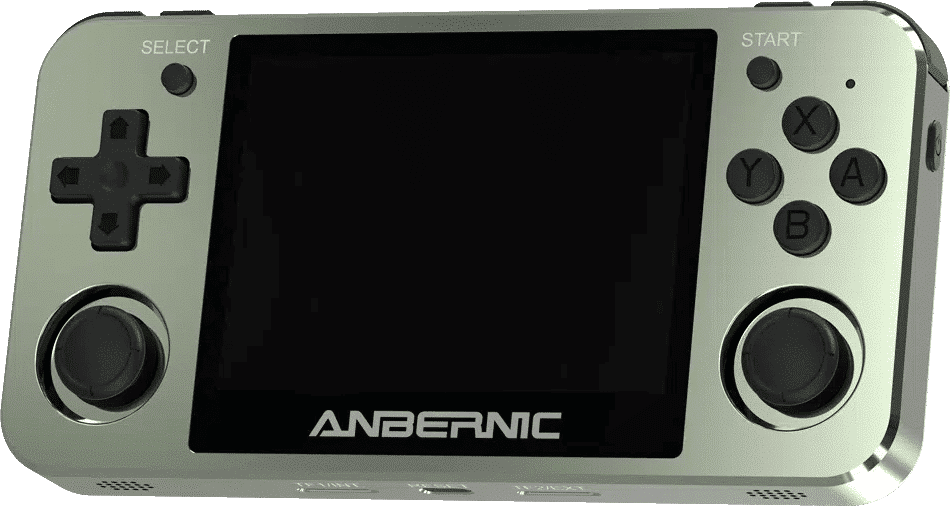
The RG351MP is the fourth, and presumably final iteration of the RG351 handheld before the new „fourth generation" begins.
It brings all the most popular features of previous RG351 incarnations to a head in one, cohesive unit. Featuring the 4:3 display and dual-SD card design of the RG351V, with the premium, sturdy metal shell of the RG351M.
Surprisingly, the RG351MP does not feature a built-in Wi-Fi chip, and must resort to using a Wi-Fi dongle like the original RG351P.
To learn more about the RG351MP, check out our review. You can also buy an RG351MP from DroiX.
Fourth Generation ANBERNIC Retro Gaming Handhelds
What is the RG552?
The headliner of the fourth generation. The RG552 represents a much anticipated technological leap from it's RG351 predecessors. There's a lot to say about this one, so bear with us for a second.
As you would expect from a technological leap, it features a more powerful processor - the Rockchip RK3399 - coupled with a sharp increase in RAM capacity (4GB total). This grants much more stable performance for platforms that were once considered „hit or miss" to emulate such as N64 and PSP. And grants the ability to emulate previously unviable platforms such as Dreamcast and Sega Saturn.
The centerpiece of the device for many is also it's large display. Weighing in at the unusual resolution of 1920×1152 (5:3), and sizing up at about 5.36 inches. It is much larger than any of its predecessors. The screen is also now touch-sensitive.
Other noteworthy features include the ability to switch between Android (on the built-in eMMC storage) and Linux-based (external microSD card) operating systems with ease. The return of the mini-HDMI port. Wi-Fi functionality without any crackling noise. And the introduction of active fan-based cooling (hot air is expelled from the top of the unit).
While it launched to a somewhat mixed perception due to some mixed receptions over the price-vs-performance-ratio. The RG552 makes an excellent entry point into the field of retro gaming handhelds, and will likely only get better over-time as updates and custom firmware are developed to really push the device to its limits.
You can learn more about the RG552 in our RG552 review.
ANBERNIC Device Specifications Table (RG350 vs RG351P vs RG350M vs etc.)
| Category/Device Name | CPU/Processor | RAM | Display Size | Display Resolution | Aspect Ratio | Control Layout | SD Card Layout | Battery | Operating System | Device Weight (Approx.) | Dimensions (Approx. cm) |
|---|---|---|---|---|---|---|---|---|---|---|---|
| RG300 | Ingenic JZ4760B @ 528Mhz, Dual-Core | 128MB DDR2 | 3 Inches | 320×480 | 4:3 | No Analog; Symetrical | 1x Internal + 1x External | 1800mAh | OpenDingux | 220g | 11.9 x 8.2 x 2.5 |
| RG350 | Ingenic JZ4770 @ 1.0GHz, Dual-Core | 512MB DDR2 | 3.5 Inches | 320×240 | 3:2 | Dual Analog; Asymmetrical | 1x Internal + 1x External | 2500mAh | OpenDingux | 160g | 14.5 x 7.3 x 1.4 |
| RG350M | Ingenic JZ4770 @ 1.0GHz, Dual-Core | 512MB DDR2 | 3.5 Inches | 640×480 | 3:2 | Dual Analog; Symmetrical | 2x External | 2500mAh | OpenDingux | 255g | 14.5 x 7.3 x 1.8 |
| RG350P | Ingenic JZ4770 @ 1.0GHz, Dual-Core | 512MB DDR2 | 3.5 Inches | 320×240 | 3:2 | Dual Analog; Symmetrical | 2x External | 2500mAh | OpenDingux | 170G | 14.5 x 7.3 x 1.8 |
| RG280M | Ingenic JZ4770 @ 1.0GHz, Dual-Core | 512MB DDR2 | 2.8 Inches | 320×480 | 3:2 | Single Analog; Asymmetrical | 2x External | 2500mAh | OpenDingux | 205g | 13.6 x 6.1 x 1.8 |
| RG280V | Ingenic JZ4770 @ 1.0GHz, Dual-Core | 512MB DDR2 | 2.8 Inches | 320×480 | 3:2 | No Analog; Symmetrical | 2x External | 2100mAh | OpenDingux | 120g | 8.9 x 7.8 x 1.8 |
| RG351P | Rockchip RK3326 @ 1.5GHz; Quad-Core | 1GB DDR3L | 3.5 Inches | 320×480 | 3:2 | Dual Analog; Symmetrical | 1x External | 3500mAh | EmuELEC | 160g | 15.2 x 7.1 x 1.8 |
| RG351M | Rockchip RK3326 @ 1.5GHz; Quad-Core | 1GB DDR3L | 3.5 Inches | 320×480 | 3:2 | Dual Analog; Symmetrical | 1x External | 3500mAh | EmuELEC | 260g | 15.2 x 7.1 x 1.8 |
| RG351V | Rockchip RK3326 @ 1.5GHz; Quad-Core | 1GB DDR3L | 3.5 Inches | 640×480 | 4:3 | Single Analog; Asymmetrical | 2x External | 3900mAh | EmuELEC | 200g | 14 x 9.4 x 2.7 |
| RG300X | Ingenic JZ4770 @ 1.0GHz, Dual-Core | 512MB DDR2 | 3 Inches | 640×480 | 4:3 | No Analog; Symmetrical | 2x External | 2500mAh | OpenDingux | 160g | 13.7 x 6.9 x 2 |
| RG351MP | Rockchip RK3326 @ 1.5GHz; Quad-Core | 1GB DDR3L | 3.5 Inches | 640×480 | 4:3 | Dual Analog; Symmetrical | 2x External | 3500mAh | EmuELEC | 267g | 14.5 x 7.3 x 1.8 |
| RG552 | Rockchip RK3339 @ 1.8GHz; Hexa-Core | 4GB LPDDR4 | 5.36 Inches | 1920×1152 | 5:3 | Dual Analog; Symmetrical | 2x External | 2x 3200mAh (6400mAh) | Android 7.1 (eMMC) + modified Batocera (microSD) | 367g | N/A |
Thank you for reading this far. We hope that this guide has been informative! If you have any questions, please feel free to leave a comment, and we'll do our best to answer them.
Quick Summary Comparisons
In this section we'll quickly gloss over the most common comparisons. For more in-depth comparisons, please view the earlier sections.
RG350 vs RG350M vs RG350P
The RG350 is the base device that the RG350M and RG350P are iterations upon.
When compared to the RG350, the RG350M features:
- A metal shell
- Repositioned controls.
- Two external microSD card slots (instead of 1x Internal + 1x External)
- A higher resolution display.
Meanwhile, when compared to the RG350, the RG350P features:
- Repositioned Controls
- Two external microSD card slots (instead of 1x Internal + 1x External)
In other words, the RG350P is a cheaper version of the RG350M. It is good for those who want some, but not all of the upgrades introduced in the redesign.
RG315P vs RG351M vs RG351V
The RG351P is the base device upon which the RG351M and RG351V are iterations upon.
Compared to the RG351P, the RG351M features:
- A metal shell
- Built-in Wi-Fi functionality
Compared to the RG351P, the RG351V features:
- A full redesign (vertical orientation, repositioned controls, etc.)
- A higher resolution display
- A different aspect ratio (4:3)
- Built-in Wi-Fi functionality
- Two external microSD card slots (instead of 1x External)
So to summarize, the RG351M is an upgrade to the RG351P, and the RG351V is a sidegrade to the RG351M.
RG280V vs RG280M
The RG280V and RG280M are both niche sidegrades in the RG350 generation of devices.
Compared to the RG350 (the base device), the RG280M features:
- Smaller size
- A smaller screen
- A metal shell
- A higher resolution screen
- Two external microSD card slots (instead of 1x Internal + 1x External)
- No HDMI output
- One less analog stick
Compared to the RG350, the RG280V features:
- A SIGNIFICANTLY smaller size
- A smaller screen
- A higher resolution screen
- Two external microSD card slots (instead of 1x Internal + 1x External)
- No HDMI output
- No analog sticks
RG300 vs RG300X
Despite being from different generations, the RG300X and RG300 have similar enough names that one might confuse them easily.
Compared to the RG300, the RG300X features:
- A horizontal design
- A more powerful processor
- More RAM
- A smaller screen
- HDMI output
- L2/R2 buttons
- An easier-to-access secondary microSD card
RG351M vs RG351MP vs RG351P
The RG351P is the base device upon which the RG351MP and RG351M are iterations upon.
Compared to the RG351P, the RG351M features:
- A metal shell
- Built-in Wi-Fi functionality
Compared to the RG351P, the RG351MP has:
- A metal shell
- Two external microSD card slots
- A higher-resolution display
- A different aspect ratio (4:3)
Where to buy ANBERNIC Handhelds (RG351P, RG350M, etc.)
You can purchase most of these handhelds at DroiX!
RG350: https://go.droix.co.uk/RG350
RG350M: https://go.droix.co.uk/RG350M
RG350P: https://go.droix.co.uk/RG350P
RG280V: https://go.droix.co.uk/RG280V
RG351P: https://go.droix.co.uk/RG351P
RG351M: https://go.droix.co.uk/RG351M
RG351V: https://go.droix.co.uk/RG351V
RG300X: https://go.droix.co.uk/RG300X
RG351MP: https://go.droix.co.uk/RG351MP
RG552: https://go.droix.co.uk/RG552
The only model we have never sold is the RG280M!



